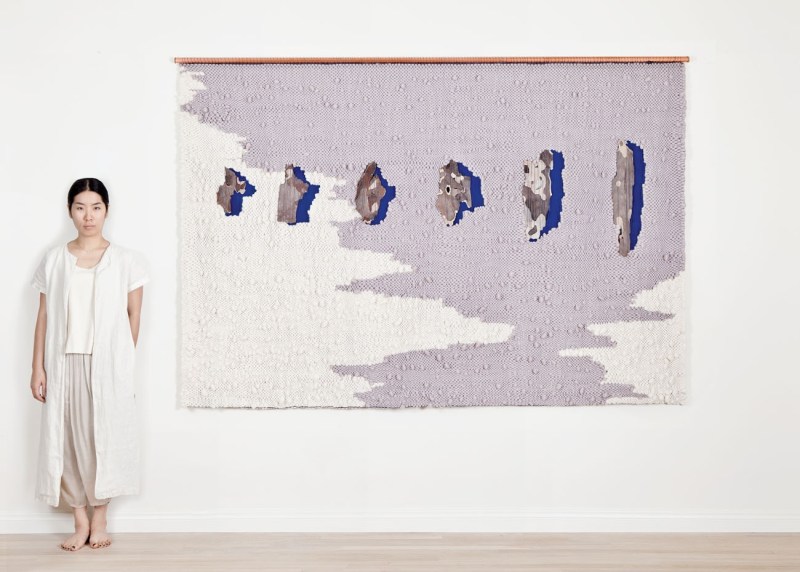Passion for weaving
Woven hangings adorn the walls and explode on the canvas: decryption
Let's go back in time… Men have always woven, to design clothing or utilitarian objects, then to create ornamental fabrics for wall hangings. Also, each civilization has developed a highly symbolic artistic vocabulary and weaving techniques that are specific to it. In addition to a certain know-how, tapestry of course requires tools. First, the support. There are many kinds depending on the type of tapestry that is practiced: the so-called "lists" and the "point". The first requires a frame-or loom-, the second not necessarily. Apart from the ultra-elaborate looms, a wooden frame adapted to the size of the tapestry to be made is perfectly suitable. Inside the frame, the warp threads are fixed lengthwise. In width, the interlacing of the weft threads creates the pattern thanks to the colors and the frequency of threading. The realization of a tapestry requires a brooch for the passage of the wefts, a comb to pack the weaving, skeins of yarn... and above all skilled hands!
The " freeform weaving " or the "wild tapestry"
On the edge between the decorative craft object and the work of art, modern tapestry has been enriched by multiple influences and a new expression that goes beyond simple weaving. of a picture.
In the United States, but also in Europe, " Fiber Art " experienced a real revolution in the 1960s and 1970s. The tapestry then became volume - sometimes three-dimensional - and playing with color contrasts as well as the rhythm between the flat areas of material and volutes of yarn, ruffled and floating. It was thus baptized " freeform weaving» for its more free and wild aspect than the traditional tapestry. But for those who are unaware of its artistic dimension, tapestry just like macrame (textile creation based on knots) could rhyme with a hippie aesthetic that is a bit cheesy. Until they set off again to conquer our walls! In the Ace Hotel in Palm Springs, you can admire a work from the 1960s by Californian artist Romeo Reyna, in the one in Portland, Sally England delivers her modern interpretation of macrame. Here and there we discover or rediscover influential artists of " Fiber Art“: Claire Zeisler, Diane Itter, Else Regensteiner… In Paris, the Palais de Tokyo has been hosting since the end of April an evolving architectural installation by Sheila Hicks, considered one of the high priestess of this artistic movement—her work is world famous: with weft threads she added large locks in the form of pompoms and, in the manner of a passementier, she made ropes which she hung on woven bottoms. Today, the sublime creations of young artists breathe new life.
Mimi Jung – Brook&Lyn
Mimi lives in Los Angeles. First studying fine arts, she turned to graphic design. Mimi's journey is unique in that she didn't weave right away, but started by imagining jewellery. A characteristic that is not insignificant and which, according to her, influences her approach to weaving. Her husband, Brian, with whom she created the Brook&Lyn studio, made the six weaving frames she uses. While some accompany him on his travels, others measure several meters. Thanks to her minimalist, poetic and modern works, Mimi imprints a very personal and artistic vision of this ancestral practice. Beyond the execution of a technique, she lets herself be guided by materials (denim, mohair, tree bark…), feelings: “By weaving, I try as a painter would, to express emotions and a strong concept in order to go beyond the purely decorative aspect of the tapestry. It is a form of meditation. Each hand-woven creation can take several weeks, it's repetitive work, but I love this process .”

